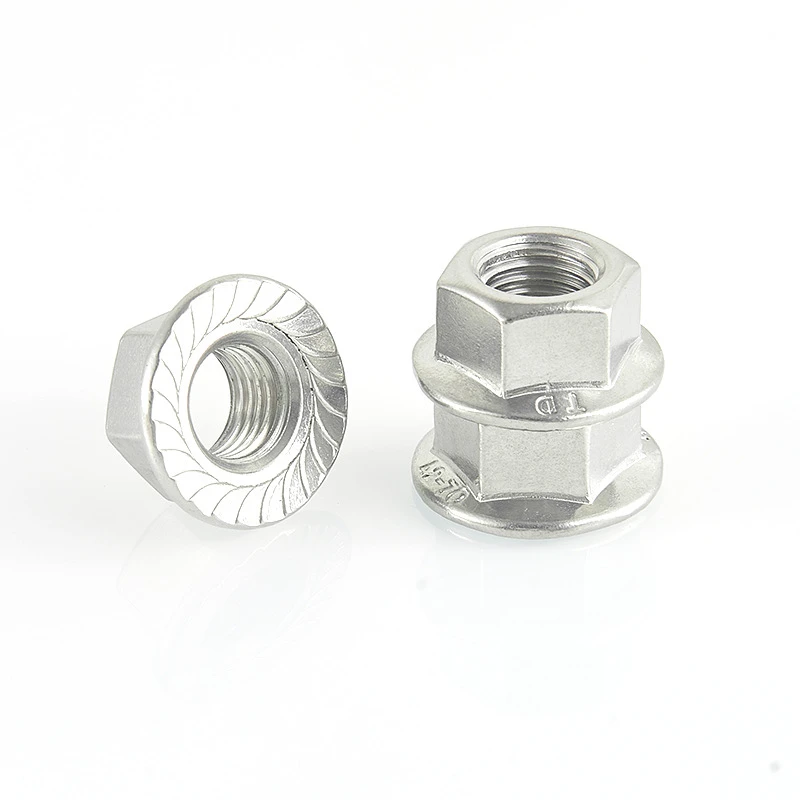

large rivet nuts
नवम्बर . 21, 2024 02:41 Back to list
large rivet nuts
The Versatility of Large Rivet Nuts A Comprehensive Overview
In the world of industrial fasteners, large rivet nuts stand out for their unique capabilities and versatility in various applications. A combination of strength, durability, and ease of installation makes these fasteners a popular choice in sectors ranging from automotive to aerospace, as well as in general manufacturing and construction.
What are Large Rivet Nuts?
Rivet nuts, also known as blind nuts or threaded inserts, are cylindrical fasteners designed to provide a strong, threaded hole in materials that are too thin or inaccessible for standard fastening methods. Large rivet nuts are specifically engineered to accommodate larger sizes and greater loads, making them especially useful in demanding applications. Typically made from strong materials such as aluminum, steel, or even stainless steel, these fasteners can provide the necessary strength and resistance to corrosion for various conditions.
Applications in Industries
One of the key advantages of large rivet nuts is their versatility across different industries. In the automotive sector, for instance, they are utilized in assembling body panels and components where traditional nuts and bolts may not fit or could compromise the integrity of the material. Similarly, in the aerospace industry, the lightweight yet robust characteristics of large rivet nuts make them ideal for use in aircraft assemblies, where every ounce counts without sacrificing safety.
Even in construction, large rivet nuts play a pivotal role
. They can be embedded into frameworks to create a secure and versatile anchoring point for a wide array of materials, including wood and synthetic composites. This adaptability allows for modifications and enhancements to be made to structures without significant alterations or damage to the existing material.large rivet nuts

Installation Process
The installation of large rivet nuts is straightforward, making them a favored choice among engineers and technicians. The common method involves drilling a hole into the base material, inserting the rivet nut, and then using a special tool to collapse the nut’s flange against the material's surface, creating a secure anchoring point. This process can be performed quickly and effectively, even in confined spaces, which is a significant benefit in assembly line operations or tight construction sites.
Advantages Over Traditional Fasteners
One of the major advantages of using large rivet nuts over traditional fasteners, such as screws or bolts, is their ability to provide strong threads in thin materials. This can prevent shearing or stripping, which are common issues encountered with standard fastening techniques. Furthermore, rivet nuts allow designers and engineers to create more streamlined and aesthetically pleasing assemblies, as they can be installed from one side without the need for access to the opposite side.
Conclusion
In summary, large rivet nuts have emerged as an essential component in modern manufacturing and construction. Their strength, ease of installation, and adaptability across various industries underscore their importance in an array of applications. As technology evolves and the demand for lightweight and durable materials increases, the role of large rivet nuts is likely to expand, ensuring they remain a vital element in the toolkit of engineers and builders alike. Whether it’s in the automotive assembly line, the aerospace sector, or construction projects, these fasteners continue to prove their worth in providing secure and reliable fastening solutions.
Latest news
-
Hot Dip Galvanized Bolts - LongZe Metal Products|Corrosion Resistance, High Strength
NewsAug.03,2025
-
Premium Cap Nuts: Secure & Durable Fastening Solutions
NewsAug.03,2025
-
High-Strength Hot Dip Galvanized Bolts - LongZe Metal Products|Corrosion Resistance, Customization
NewsAug.03,2025
-
Hot Dip Galvanized Bolts-Hebei Longze|Corrosion Resistance&High Strength
NewsAug.03,2025
-
High-Strength Hot Dip Galvanized Bolts - Hebei Longze|Corrosion Resistance&Customization
NewsAug.02,2025
-
Hot Dip Galvanized Bolts-LongZe|Corrosion Resistance&Customization
NewsAug.02,2025

